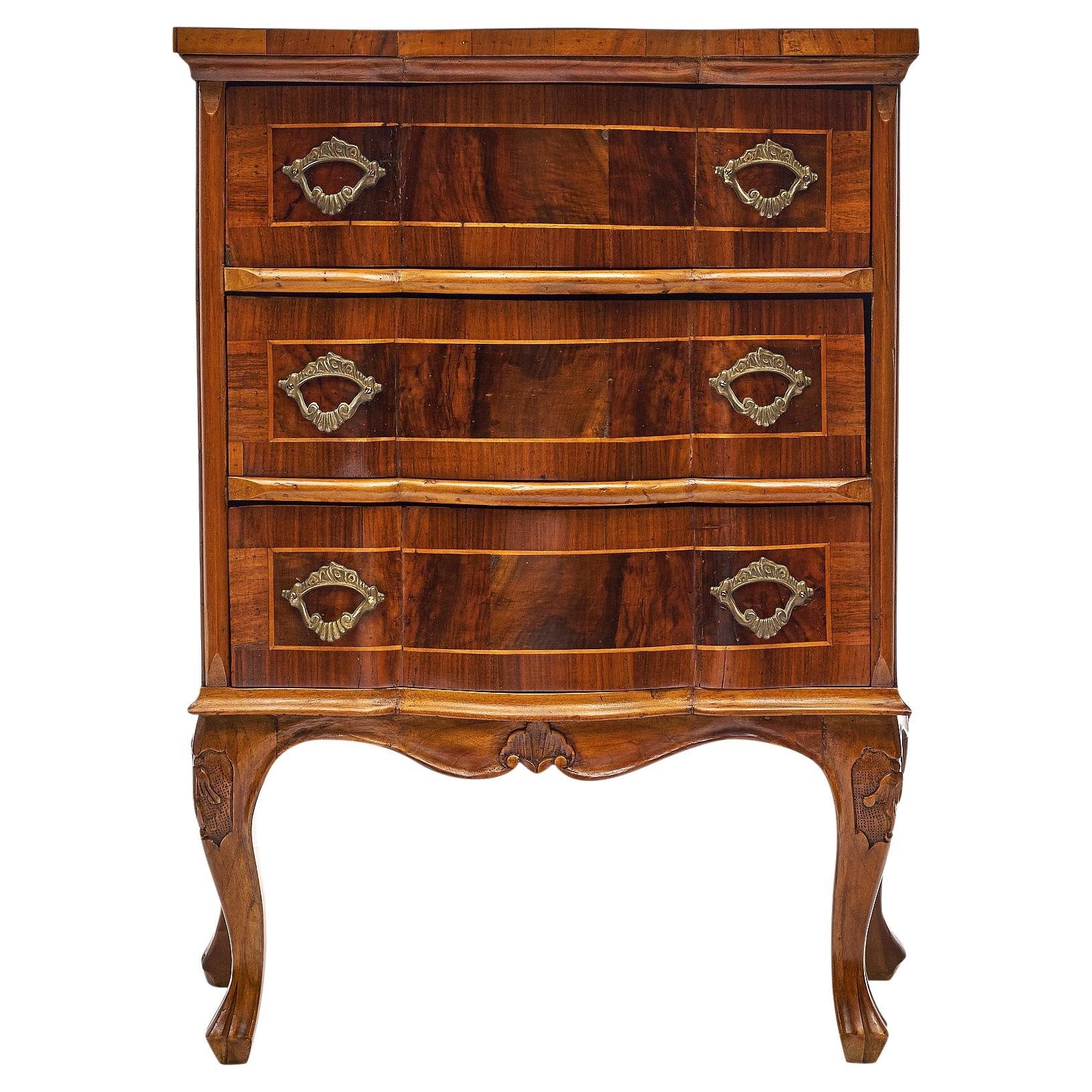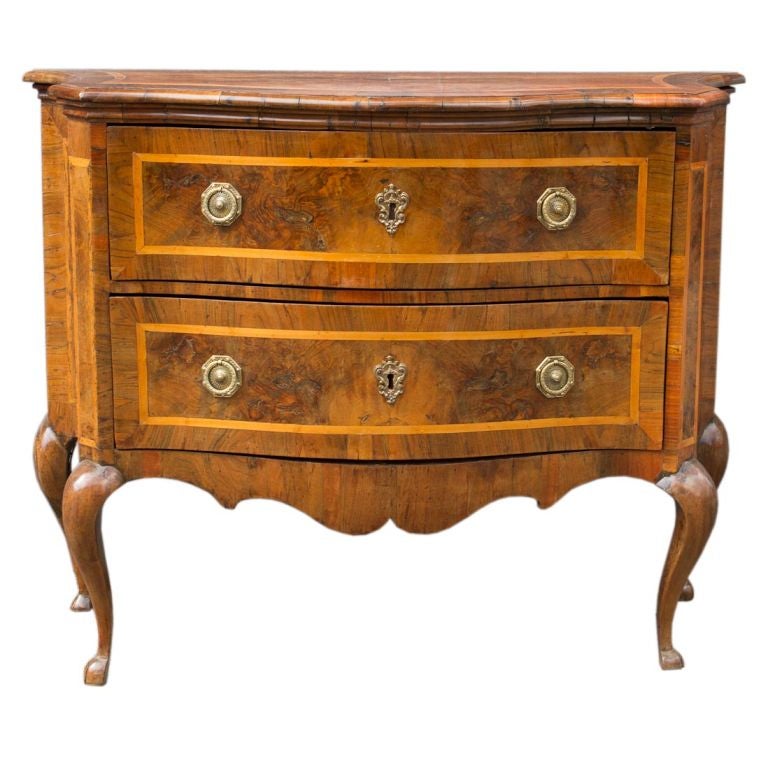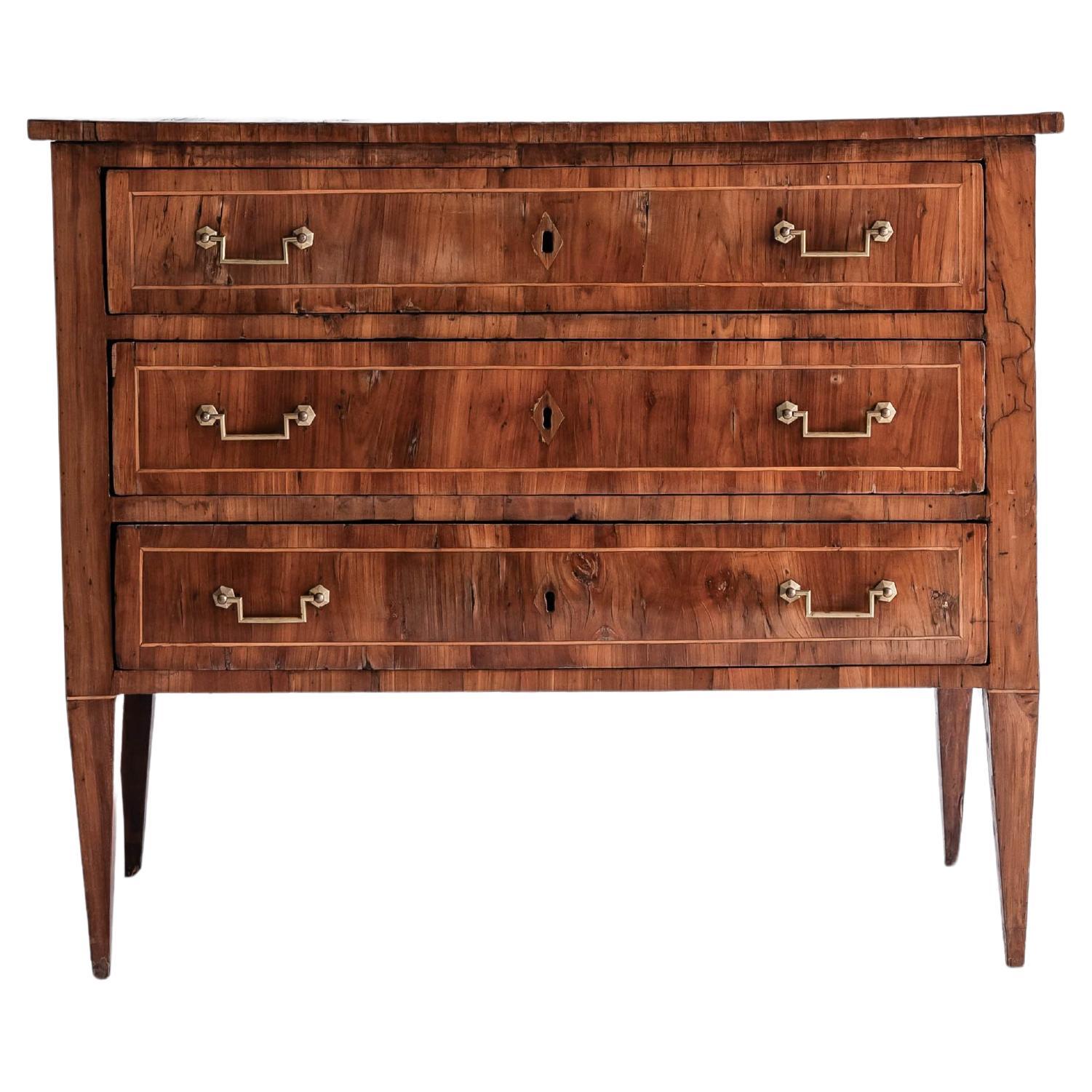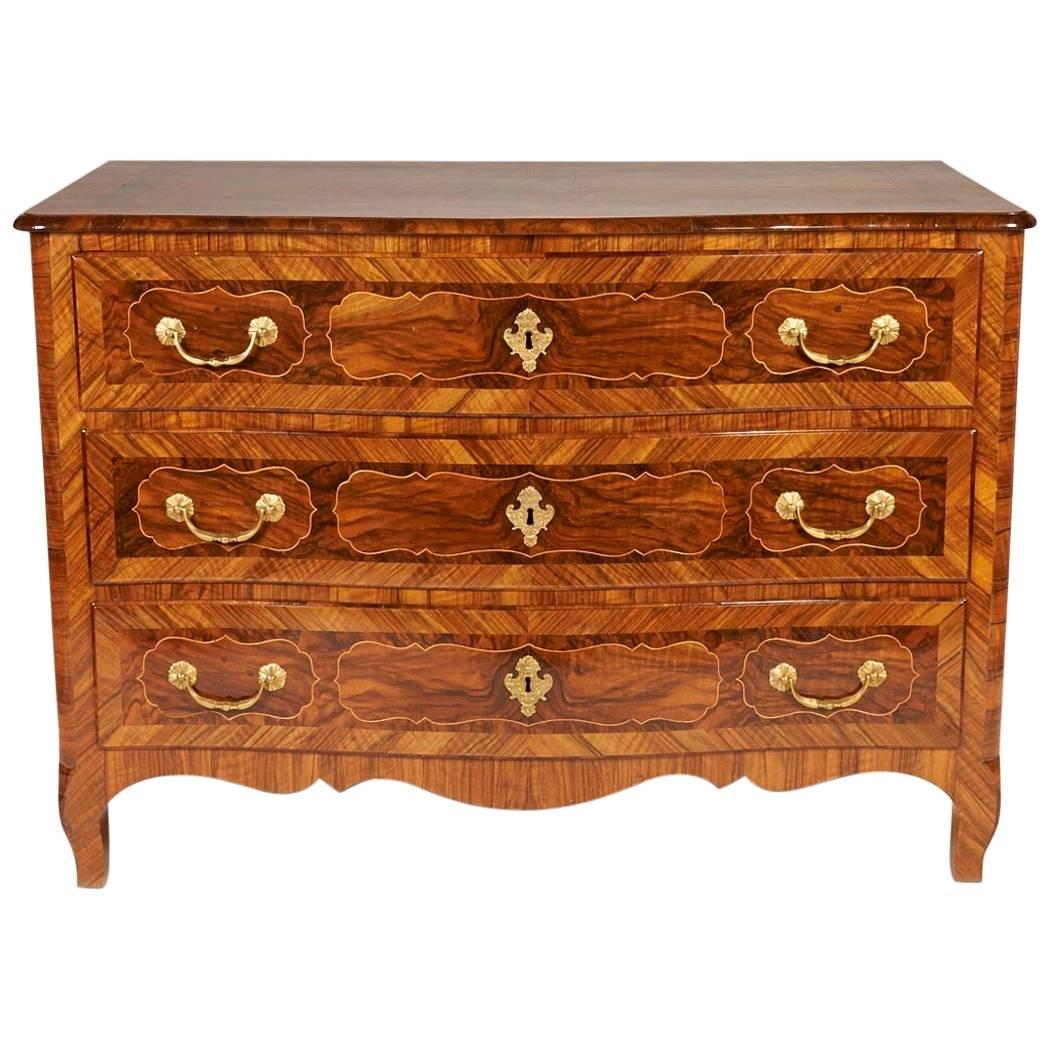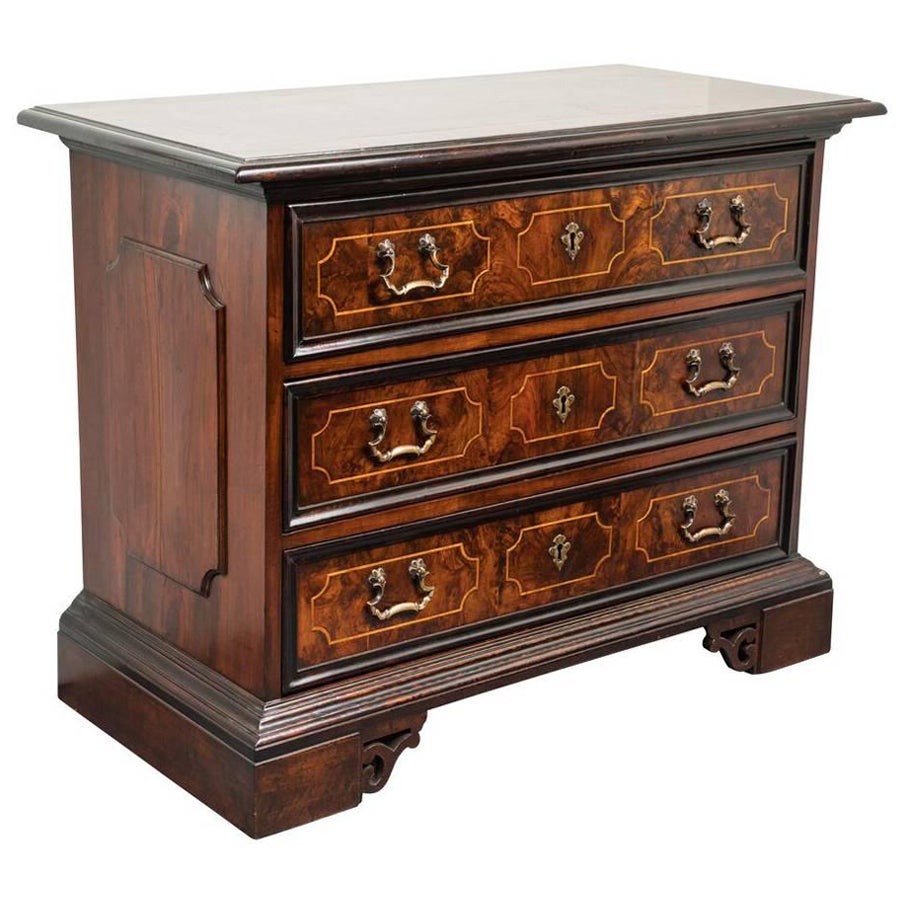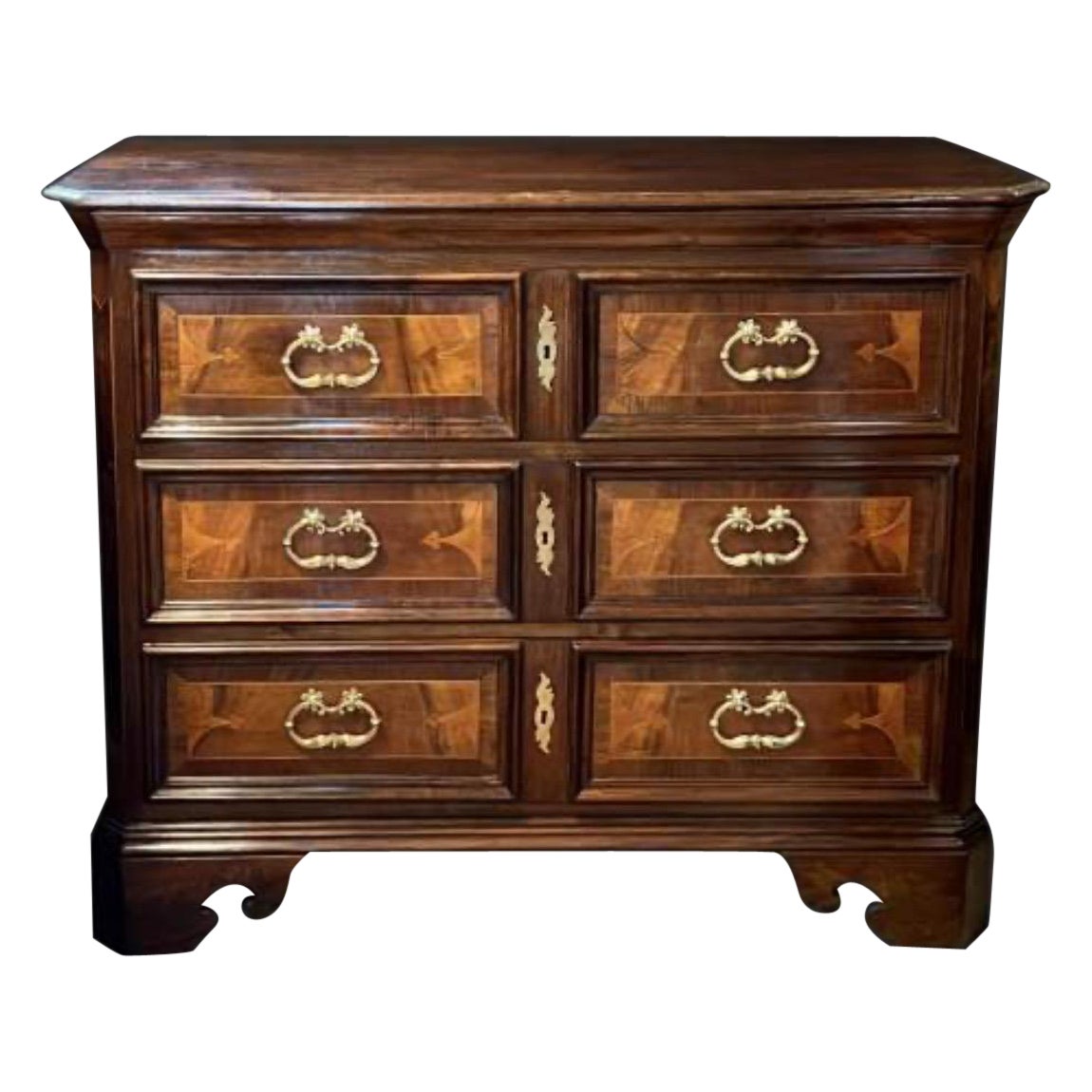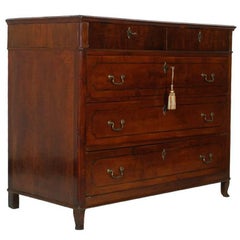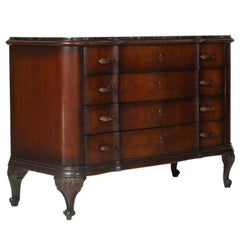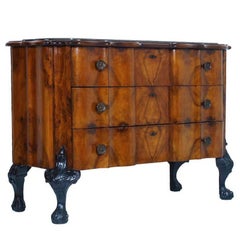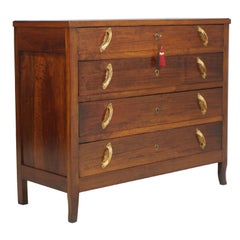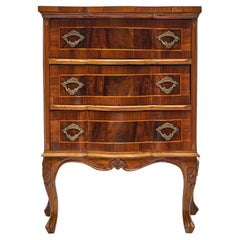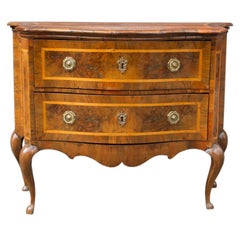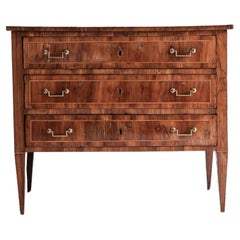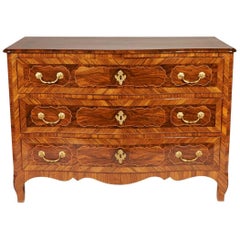Items Similar to Art Decò Venetian Baroque Commode attributed Gaetano Borsani, Atelier di Varedo
Want more images or videos?
Request additional images or videos from the seller
1 of 9
Art Decò Venetian Baroque Commode attributed Gaetano Borsani, Atelier di Varedo
$10,154.57
£7,405.18
€8,500
CA$13,891.24
A$15,544.69
CHF 8,116.71
MX$191,105.82
NOK 102,401.63
SEK 96,359.43
DKK 64,684.85
Shipping
Retrieving quote...The 1stDibs Promise:
Authenticity Guarantee,
Money-Back Guarantee,
24-Hour Cancellation
About the Item
Elegant Venetian chest of drawers from the 1930s produced by Atelier di Varedo and attributed to Gaetano Borsani, with shaped top and rounded shapes with 4 drawers, made of veneered walnut. Golden brass opening handles. Revised and wax polished.
His two bedside tables published with code FP12b
About Gaetano e Osvaldo Borsani
Osvaldo Borsani (born 1911, Varedo, Italy–died 1985, Milano, Italy) was an Italian designer and architect, born into a family of furniture makers with along and well established artisanal tradition. His father, Gaetano Borsani, owned his own furniture shop, the Atelier di Varedo, where the 16-year-old Osvaldo received his first training. At that time, the designer of the atelier was the architect Gino Maggioni, who brought with him influences of the early 20th century Jugendstil movement from Vienna and who instilled in the young Borsani an appreciation for the arts and crafts and furniture making. Osvaldo Borsani first studied fine arts at Accademia di Belle Arti di Brera in Milan, graduating in 1931, and then pursued studies in architecture at Politecnico di Milano, where he graduated in 1936.
In 1933, two years before graduating as an architect, Borsani designed the Casa Minima project for the V Triennale di Milano (Milan Triennial), along with architects Cairoli and Varisco. This project earned him a silver medal for its Rationalist code and geometries, and he received positive reviews from the critic Edoardo Persico of Casabella magazine.
Villa Borsani And Other Prominent Architectural Work
In 1937, Osvaldo Borsani designed Villa Presenti in Forte dei Marmi, a sea town in Tuscany where the Italian aristocracy and industrial elite would build their houses, a project that displayed the same rationalistic rigor displayed in Casa Minima, but softened by the use of mediterranean finishes and materials.
Villa Borsani designed by Osvaldo Borsani. Varedo, Italy
Villa Borsani. Varedo, Italy
In 1943, Osvaldo designed and built his own house, the Villa Borsani, in Varedo, which, despite being conceptualized under strict Rationalist principles, incorporated objects and art of younger artists that communicate a freer approach to the human expression. The Villa Borsani project involved artists such as Adriano Spilimbergo, Fausto Melotti, Lucio Fontana (who made the ceramic fireplace and the ceramic Madonna), and Agenore Fabbri (who made the bronze statue in the staircase). To this day, Villa Borsani has been preserved with most of its original furniture and it remains with Osvaldo Borsani’s family along with the extensive archives of his work.
Osvaldo Borsani As a Successful Product and Furniture Designer
After Villa Borsani, Osvaldo continued to develop many projects for the Milanese bourgeoisie, frequently with many of the same artists whom he employed for his villa. A particularly strong relationship was the one that Osvaldo developed with artist Lucio Fontana, a close friend since the time of the Accademia de Belle Arti di Brera, and whom Borsani assigned to make a large metal balcony for the Tecno company in 1956.
Osvaldo Borsani’s design work, just as his larger architectural projects, which he also considered design work, very often incorporated elements created by other artists and designers such as: Roberto Crippa, Arnaldo and Giò Pomodoro, Agenore Fabbri, Fausto Melotti, Andrea Cascella, and Lucio Fontana. Of all of these collaborations, the one that Borsani forged with Lucio Fontana resulted in the creation of many of Borsani’s furnishing designs of the late 1930s and 1940s. With Fontana, Borsani integrated sculptural ceramic and bronze elements, wood and gilded stucco, and interventions on glass tabletops with decorations, to name a few design elements, to his furniture designs.
In 1953, Osvaldo understood the imminent need to transform the artisan approach to furniture making into a modern industry capable of meeting a larger demand at more accessible prices. It was then that Osvaldo and his twin brother Fulgenzio founded the manufacturer Tecno, with the aim of utilizing modern manufacturing techniques that will deliver high-quality furniture to a larger international market. Initially, Tecno manufactured only Borsani’s furniture designs, and, although he continued to design furniture and objects until the early 1980s, by the late 1950s, Tecno also manufactured furniture from other designers, including Vico Magistretti, Roberto Mango, Gae Aulenti, Eugenio Gerli, Carlo de Carli, and Gio Ponti.
Black P40 chair by Osvaldo Borsani for Tecno (1955) Italian design and furniture gallery Casati Gallery
P40 chair by Osvaldo Borsani for Tecno (1955)
Among the most successful and iconic Tecno designs are the 1954 D70, a sofa that can assume approximately 20 positions; the 1955 P40 adjustable lounge chair, described as a “machine for sitting,” which could assume 486 distinct postures; the 1954 T41 dining table; the 1961 AT 16 coat rack; the 1965 Canada chair; the 1968 Graphis office furniture system; and the 1972 P128 office chair.
Along with Eugenio Gerli, Marco Fantoni, his brother Flugenzio, and his daughter Valeria, Osvaldo Borsani founded Centro Progetti Tecno (1970), a design shop focused on creating innovative products and interiors for work and school environments.
Early furniture pieces by Tecno can be found in the permanent collections of the MoMA in New York, the Victoria & Albert Museum in London, the Centre Pompidou in Paris, the Trienalle di Milano Museum, and the Neue Sammlung in Munich.
In 2018, the Triennale di Milano organized a retrospective of Osvaldo Borsani’s work. The exhibition “Osvaldo Borsani” was co-curated by Tommaso Fantoni, Borsani’s grandson, and Norman Foster, who had worked with Borsani at Tecno–where he designed the Nomos table and furniture systems for airport and museums.
- Creator:Atelier Borsani Varedo (Cabinetmaker)
- Attributed to:Gaetano Borsani (Designer)
- Dimensions:Height: 38.19 in (97 cm)Width: 50.01 in (127 cm)Depth: 21.66 in (55 cm)
- Style:Baroque Revival (Of the Period)
- Materials and Techniques:
- Place of Origin:
- Period:
- Date of Manufacture:1930s
- Condition:Wear consistent with age and use.
- Seller Location:Vigonza, IT
- Reference Number:Seller: FP12a1stDibs: LU2495330264032
About the Seller
4.9
Vetted Professional Seller
Every seller passes strict standards for authenticity and reliability
Established in 2017
1stDibs seller since 2017
301 sales on 1stDibs
Typical response time: 3 hours
- ShippingRetrieving quote...Shipping from: Vigonza, Italy
- Return Policy
Authenticity Guarantee
In the unlikely event there’s an issue with an item’s authenticity, contact us within 1 year for a full refund. DetailsMoney-Back Guarantee
If your item is not as described, is damaged in transit, or does not arrive, contact us within 7 days for a full refund. Details24-Hour Cancellation
You have a 24-hour grace period in which to reconsider your purchase, with no questions asked.Vetted Professional Sellers
Our world-class sellers must adhere to strict standards for service and quality, maintaining the integrity of our listings.Price-Match Guarantee
If you find that a seller listed the same item for a lower price elsewhere, we’ll match it.Trusted Global Delivery
Our best-in-class carrier network provides specialized shipping options worldwide, including custom delivery.More From This Seller
View AllLate 18th Century, Antique Italian Commode Chest of Drawers, Walnut, with Inlaid
Located in Vigonza, Padua
Late 18th century, important Italian antique commode chest of drawers, in solid walnut, with inlaid on front drawers. Polished to wax
Chest of dr...
Category
Antique Late 18th Century Italian Louis XIV Commodes and Chests of Drawers
Materials
Walnut
1910s Venetian Baroque Commode, Hand-Carved Walnut and veneer mogano
By Vincenzo Cadorin
Located in Vigonza, Padua
Early 20th century Venetian Baroque Revival commode, dresser, with marble top , hand-carved walnut and veneer mogano. Restored and polished to wax , ready to use
Measures cm: H 100 ...
Category
Vintage 1910s Italian Baroque Revival Commodes and Chests of Drawers
Materials
Marble
1900s Venetian Baroque Commode Chest of Drawers in Burl Walnut with Marble Top
By Vincenzo Cadorin
Located in Vigonza, Padua
A elegant serpentine Venetian 1900s Baroque commode chest of drawers in ebonized hand-carved walnut and walnut veneered with black marble top, attributed to Vincenzo Cadorin. Bronze ...
Category
Antique Early 1900s Italian Baroque Revival Commodes and Chests of Drawers
Materials
Marble, Brass
18th Century Italy Commode Solid Walnut, Wax-Polished
Located in Vigonza, Padua
18th century Italy commode in solid walnut, wax polished
The chest of drawers has been registered for the smooth functioning of the drawers
The current drawer handles (in brass an...
Category
Antique Mid-18th Century Italian Country Commodes and Chests of Drawers
Materials
Walnut
1910s Venetian Eclectic Commode Dresser, carved walnut & Burl Walnut, Marble Top
Located in Vigonza, Padua
1920s Venetian eclectic Bella Epoque period, commode dresser in carved walnut and burl walnut with marble top. Restored and polished with wax. Original handles of the time.
Measures...
Category
Vintage 1910s Italian Baroque Revival Commodes and Chests of Drawers
Materials
Marble
Mid 19th Century Italian Neoclassic Commode , in solid walnut, wax polished
Located in Vigonza, Padua
Mid 19th century neoclassic commode , chest of drawers , in solid larch wood, polished to wax .Embellishment of the front drawers wi...
Category
Antique 1860s Italian Neoclassical Commodes and Chests of Drawers
Materials
Walnut
You May Also Like
Italian Baroque Venetian Chest
Located in Austin, TX
Italian chest from the region of Venice. The elegant cabinet boasts a rich combination of fruit wood marquetry including walnut; cherry wood; and lemon wood inlays. We love the serpe...
Category
Vintage 1920s Italian Baroque Commodes and Chests of Drawers
Materials
Cherry, Fruitwood, Walnut
Beautiful 18th Century Italian Baroque Commode
Located in Montreal, QC
Beautiful Italian Baroque period walnut and fruitwood veneered serpentine front chest of drawers on cabriole legs.
Category
Antique 18th Century and Earlier Italian Commodes and Chests of Drawers
Materials
Walnut
18th Century Italian Chest
Located in Colorado Springs, CO
18th c. Italian wood veneered three drawer chest. Original brass hardware. Structurally sound, smooth dovetailed drawers. Patina throughout, no large cracks or splits, and one back l...
Category
Antique 19th Century Italian Neoclassical Commodes and Chests of Drawers
Materials
Wood
18th Century Baroque Commode, Germany 1750-1760
Located in Belmont, MA
Unique 18th century Baroque commode, Germany 1750-1760, walnut veneer with boxwood marquetry. Three drawer body with rectangular outline o...
Category
Antique 1750s German Baroque Commodes and Chests of Drawers
Materials
Boxwood
Elegantly Veneered, 19th Century Tuscan Commode
Located in Los Angeles, CA
Hand-carved, ebonized walnut and burl, three-drawer commode with suites of contrasting, pearwood inlay on each drawer. The sides with raised panels. The whole on a stepped and bracke...
Category
Antique 1880s Italian Commodes and Chests of Drawers
Materials
Pearwood, Walnut, Burl
A Large 18th Century Northern Italian Chest of Drawers
Located in London, GB
A Large 18th century Northern Italian chest of drawers.
Three large drawers with faux double fronts. Inlaid accents to the drawer fronts and canted corners. Standing on carved brack...
Category
Antique 1760s Italian Baroque Commodes and Chests of Drawers
Materials
Fruitwood, Walnut
More Ways To Browse
Architect Drawers
Mediterranean Revival
1940s School Chair
Mediterranean Sofa
Art Deco Bedside Cabinets
Baroque Couch
P40 Chair
Tabletop Storage Drawers
Airport Lounge
Tecno Milano
Art Deco Walnut Lounge Chairs
1940s Art Deco Couches
Art Deco Walnut Bedside
Vienna Statue
Italian Display Case 1970
Used Magazine Display Racks
20th Century Italian Baroque Dining Table
Tecno Milan
